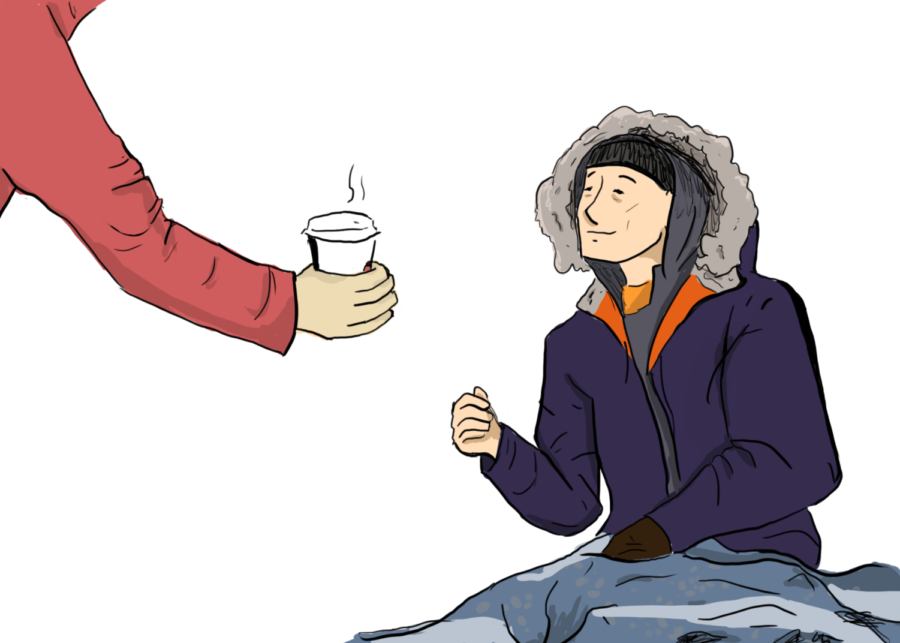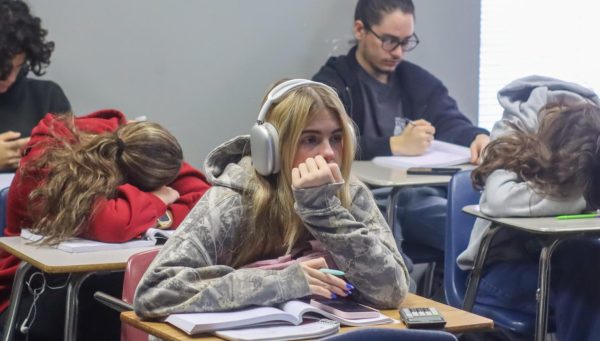Unaddressed
photo by Josephine Lim
There are currently over 2,000 people living in Seminole County. While the Rescue Outreach Mission Center provides emergency shelter and resources for these individuals, they are currently the only homeless shelter operating within the county.
As youth coordinator at the Coalition for the Homeless in Central Florida, one of the most frequent questions Natasha Yeung hears is “there are homeless kids?”
“Yes, of course there are.”
With only 13 affordable housing units for every 100 low-income households, it is no secret that Florida is knee-deep in an affordable housing crisis. According to the National Low Income Housing Coalition, a one-bedroom apartment requires a minimum-wage employee to work 106 hours a week to afford rent. The result? A homeless population of more than 27,000, at least 7,000 of which are school-age children.
At the Coalition, Yeung collaborates with volunteers in the Orlando area to help children ages 5-7 adjust to both long term and transitional homelessness. While the organization helps facilitate access to permanent housing, its youth program offers classes on mental health, financial literacy and career exploration, as well as providing extracurricular field trips over spring break and the holidays.
“We try to provide [children] with an experience that they wouldn’t normally have otherwise,” Yeung said. “Anything that I did or had or even didn’t have an opportunity to experience, I want these kids to experience.”
Homelessness is also a prevalent issue among Seminole County students. In 2020, there were approximately 1,200 homeless students attending public school in Seminole County. Social worker Beverly Bonilla Flores meets with many homeless or low-income families to connect them with agencies like Families in Need.
“There are many students and families that are struggling with [homelessness]. We make sure that students have transportation, support and eligibility for school breakfast and lunch,” Flores said.
Through the Families in Need fund established in 2016, students experiencing homelessness have access to free lunch, transportation and school supplies. Apart from local organizations, many nonprofits in Central Florida distribute resources to men, women and children experiencing homelessness through collaboration with volunteers. Senior Avis Shaw, who sorts canned food donations at the Second Harvest Food Bank, first started volunteering to fulfill their Bright Futures requirements, but has continued to volunteer in hopes of making an impact on communities in need.
“I think it’s very important that we students, especially seniors who might be living on their own soon, are aware of how prevalent homelessness is in Florida,” Shaw said. “I believe everyone should help out if they can because no one should have to wonder where their next meal is coming from or where they’re going to sleep that night. Volunteering at Second Harvest is how I give back.”
Students do not have to look far to get involved with local nonprofits. Clubs like Girl Up, Beta Club, Junior Optimists and Key Club often fulfill their volunteer hours at shelters nearby. On Feb. 25, the Key Club traveled to the Sharing Center, an organization that receives and distributes household essentials to low-income families. The club helped staff members sort essential items to prepare them for distribution.
“Volunteering at the Sharing Center shifted my perspective a little,” president Cheryl Nguyen said. “Being aware of families in need allowed me to understand the importance of volunteering. It provides a way for me to help families that may be less fortunate than I am.”
While organizations like Second Harvest and the Sharing Center provide resources to families in need, best-practice policies have proven the most efficient solutions to the housing shortage. According to the Florida Housing Coalition, homelessness has significantly declined since 2010, a trend largely attributed to the rise of Housing First practices, where permanent housing is the first resource provided. While Housing First policies have proven an escape from long-term homelessness, the practice has not been fully implemented by every community. For approximately 2,000 homeless people residing in Seminole County in 2019, there existed only one homeless shelter.
A former victim of homelessness herself, Yeung strives to spread awareness for the homeless community, especially its youth, combating harmful stereotypes that prevent them from getting the resources they need. According to Yeung, many of the parents she works with are homeless or in transitional living because of underlying, unaddressed trauma. As seen in a study by the Family and Youth Services Bureau, more than 80% of mothers experiencing homelessness were previous victims of domestic abuse. Coupled with a severe shortage of affordable, transitional housing, homelessness is not only a long-term affliction, but a generational one.
“We have a family here, and [the mother] said ‘you see this picture?’ and pointed to a photo of a little kid on the wall, ‘That was me as a kid. Now I’m 25 and I’m back here as an adult with my kids,’” Yeung said. “Adults who were here as children are coming back in because they weren’t given access to the skills, the education or the knowledge on how to prevent themselves from coming back into a situation like this.”
Your donation will support the student journalists of Hagerty High School. Your contribution helps us publish six issues of the BluePrint and cover our annual website hosting costs. Thank you so much!








